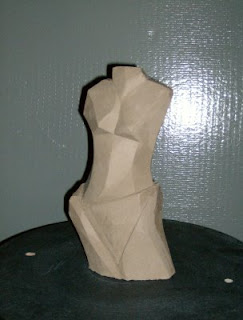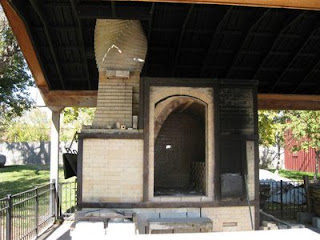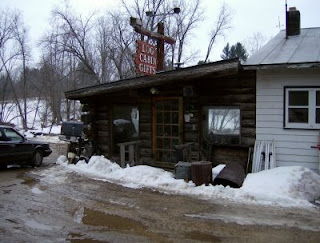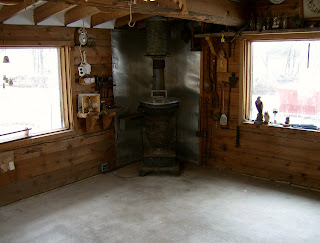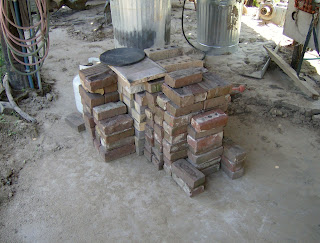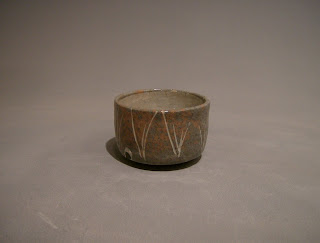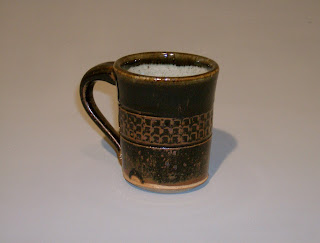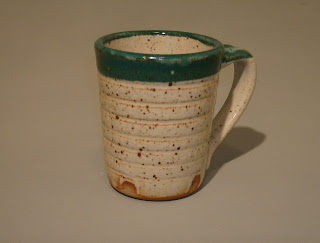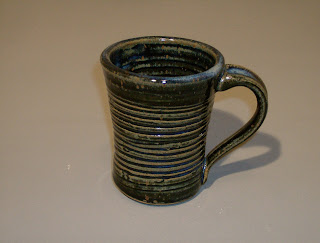
I barrel fired this bottle form about a year ago and it has been sitting on a back shelf in my studio since then because I thought a little tiny hole had blown out near the base. I remembered it only because a woman at work asked me if I could make an incense bottle for a Christmas gift. I didn't know what an incense bottle was. I had never heard of one before. She emailed me some photos and then I remembered this long forgotten bottle. I told her I had one already made, showed her this photo from a previous blog post and she said it was "perfect." Well, it turned out that the hole I thought was there wasn't there at all. It was just a minor pop-out, perhaps from some loose plaster that was in the studio. Anyway I had to buy a 1/4 inch masonry drill bit and drilled a hole approximately 1-1/2 inches from the bottom. The drill bit cut right through it--No Problemo.
Anyway, if you're going to burn incense this is probably the safest and cleanest way to do it. Wedge the stick part of the incense into a split key ring. A split key ring is one of those key rings that you have to pry apart, place the key into it and then you keep turning it until it is locked onto the ring. The incense is then lit and placed burning end first into the bottle. The split key ring keeps it from falling into the bottle. As the incense burns, the ash falls inside the bottle. The hole that I drilled into the bottle allows oxygen in as the scent comes out the top. Although I don't burn incense, I think it is a pretty good idea.
This morning I also added a new blog to my blog list, River North Pottery. And, don't forget to check out my slide show on my other blog "Coulee Region Art."




